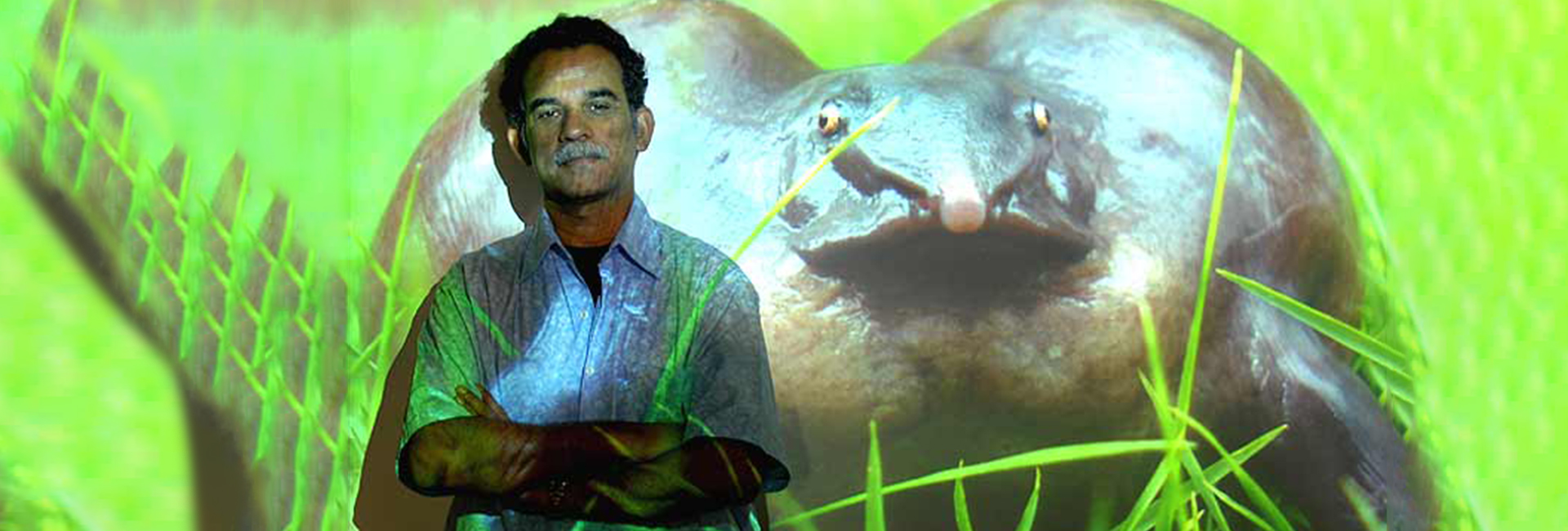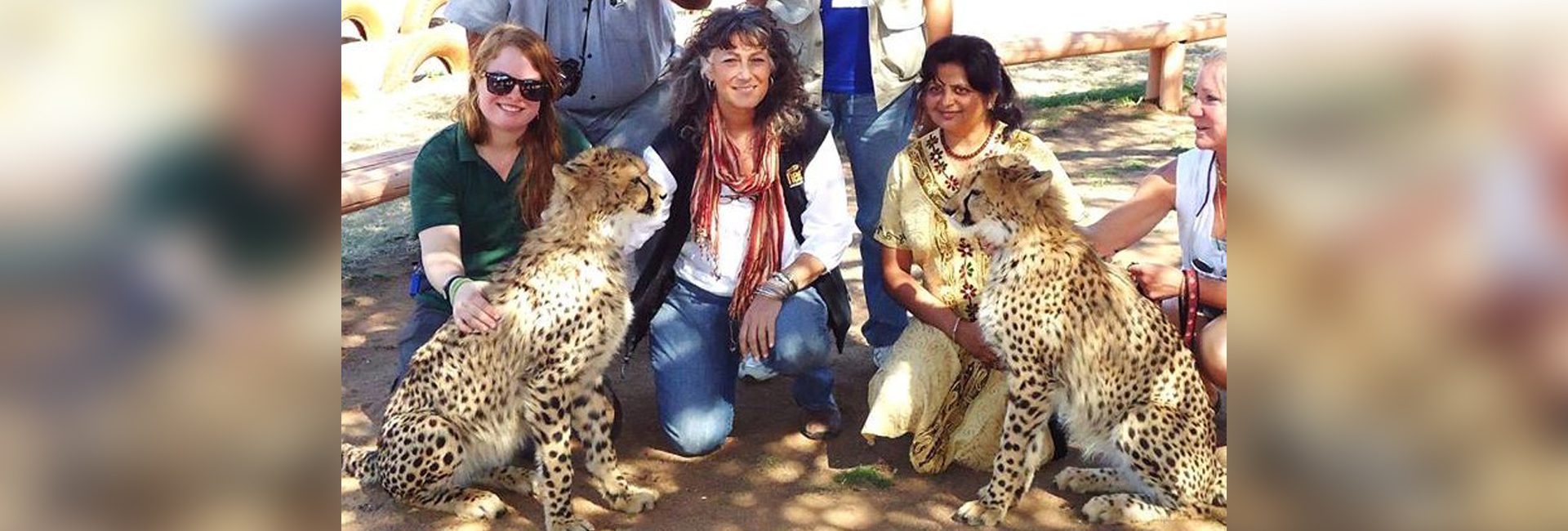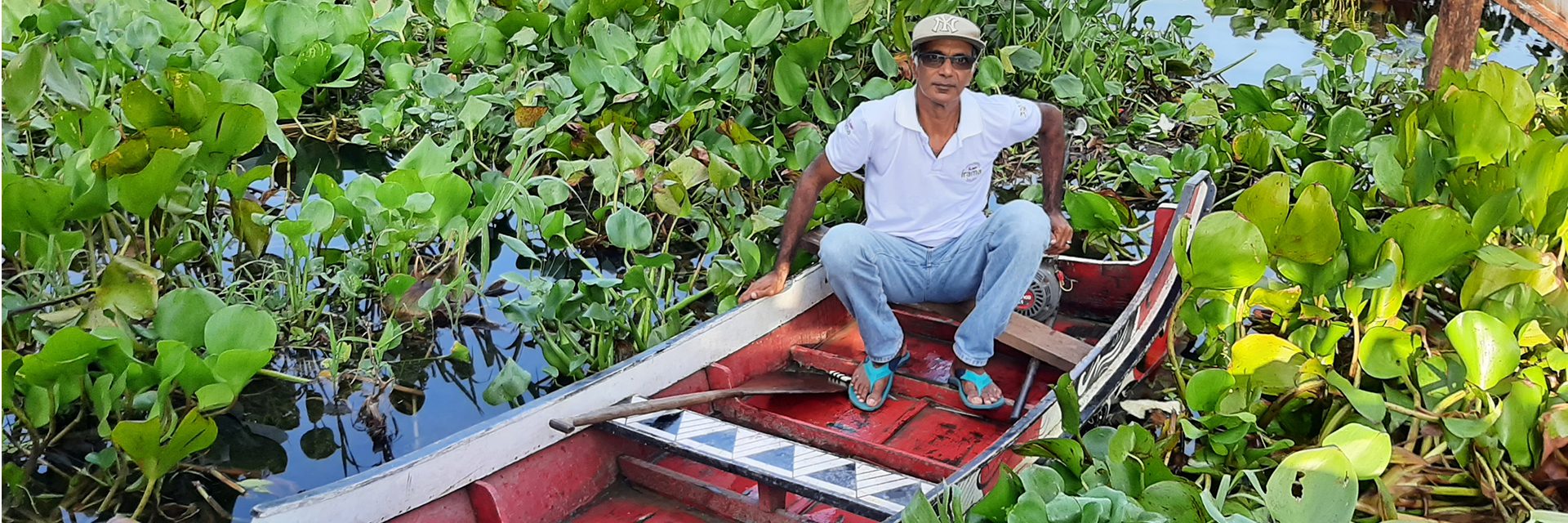(May 19, 2023) For those intrigued by the amphibian world, Professor SD Biju is a name to note. A pioneering herpetologist, he has unearthed 116 unique amphibian species across India, Indonesia, and Sri Lanka and is now preparing to bring his expertise to Harvard University as a Radcliffe Fellow.
“Delighted to announce that I will be joining the Harvard University’s Radcliffe Institute as a Radcliffe Fellow,” tweeted the Delhi University professor Sathyabhama Das Biju. Popularly known as the ‘Frogman of India’, Prof SD Biju has been selected for the prestigious Harvard Radcliffe fellowship for 2023-24. The senior professor of environmental studies at DU is the 60th fellow representing biological sciences in 23 years of the Radcliffe programme at Harvard, and only the second fellow in this discipline from India. The Radcliffe Institute for Advanced Study at Harvard University is one of the world’s leading centres for interdisciplinary exploration and research.
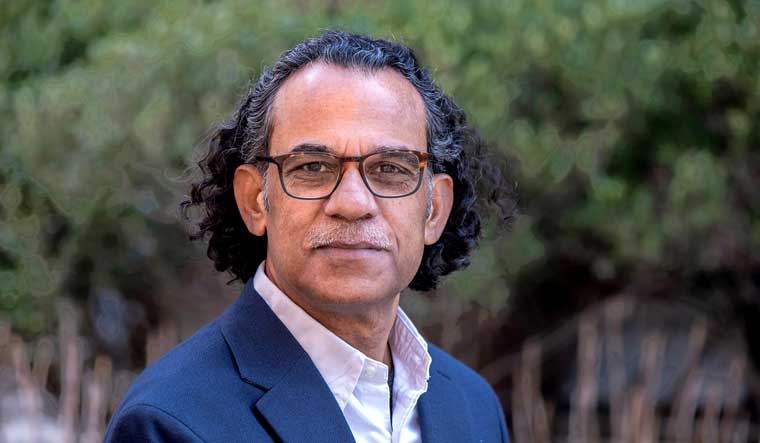
Dr S.D. Biju
The Radcliffe Fellowship
One of the most prestigious academic programmes in the world, the Radcliffe Fellowship is awarded every year to scholars, artists, and practitioners engaged in innovative work seeking to engage audiences beyond academia, confronting pressing social and policy issues along the way. This is not the herpetologist’s first association with Harvard University, where he serves as an associate of the department of organismic and evolutionary biology. However, the Radcliffe fellowship gives him the chance to work there full-time.
During his fellowship, Prof Biju plans to accelerate his scientific efforts through on-site collaboration with Harvard faculty members, postdocs, and graduate students, making use of the rich specimen collections of the Museum of Comparative Zoology. He would work to expedite efforts to outpace nameless extinctions in India’s amphibian hot spots through the discovery and documentation of species and identification of key biodiversity areas for their conservation.
“The biologist attracted global attention to amphibians in South Asia when his three decades of work discovered over a hundred new species, created an upsurge in scientific knowledge,” stated the release from Harvard.
Tryst with frogs – how it all began
The research scientist earned his first PhD in Botany from University of Calicut, India, and contributed to knowledge on plants through several scientific publications and books. He went on to obtain his second PhD in animal science from Vrije Universiteit Brussel, Belgium and shifted his focus to amphibians.
In his acceptance speech of IUCN/ ASG Sabin Awards few years ago, Professor Biju shared “I was introduced to the wonderful world of amphibians by amphibians themselves. I was a plant taxonomist. Wherever I went searching for plants, frogs were there. I became fascinated by their colours, shapes and behaviours,” he said. Slowly his interest leaned from plants to frogs. “One day I realised that my mind is full of plans for frog study, and not for plants study. From that moment frogs took charge of my life.”
Prof Biju works in India’s forests and out of his laboratory at Delhi University. During his field studies, he has spent long days in forests, even going without food several times. “No stranger to starvation as a child, I can easily go without a meal or manage in any adverse circumstance during tough field trips. This has all now become part of my life,” he shared in an interview.
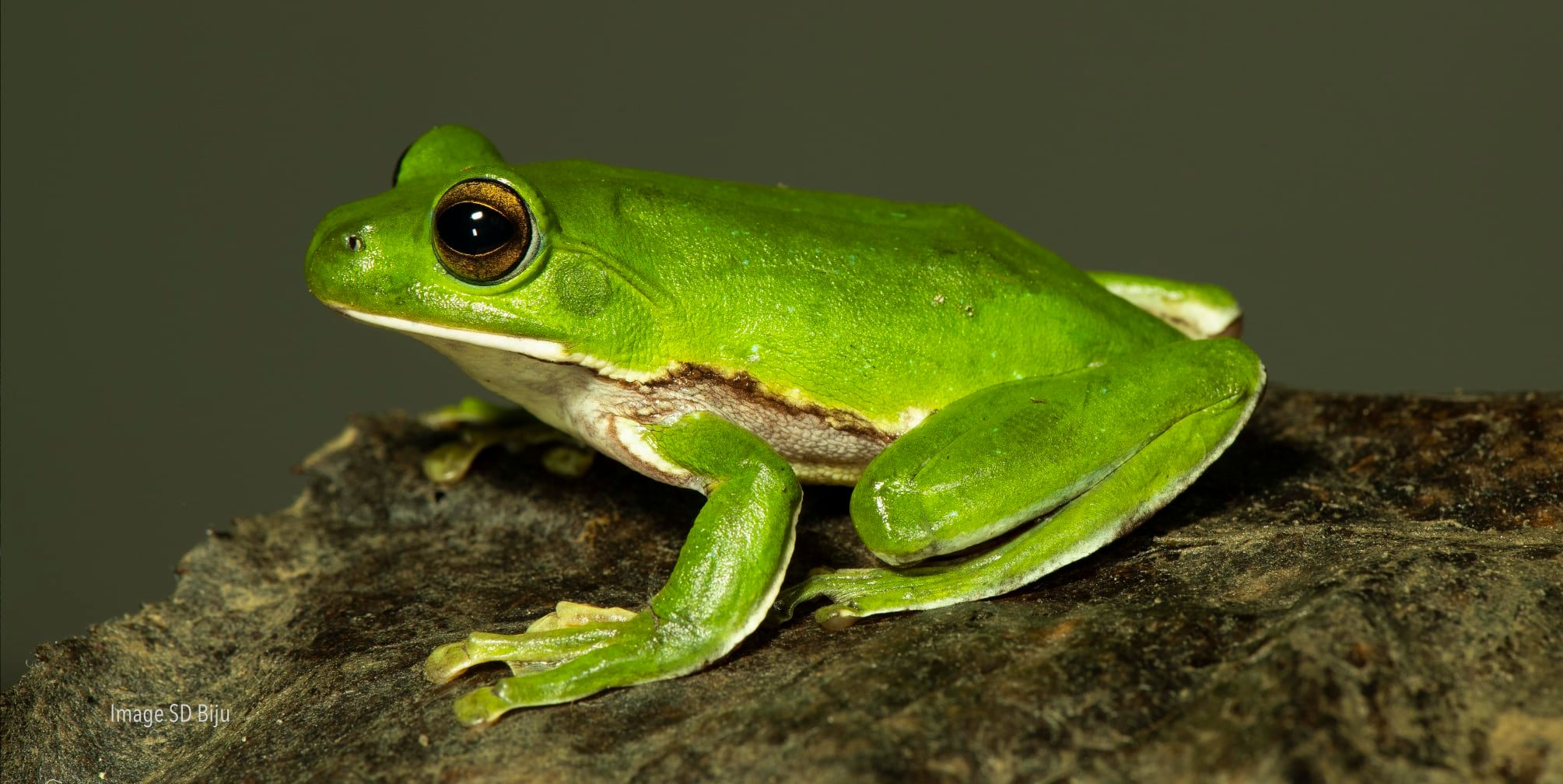
Photo Credit: Prof SD Biju
Early life
Born in Kadakkal, a remote village close to a forest in Kerala, as a little boy he used to walk to school with a broken slate in hand, after selling milk in the morning and handing over the money to his mother to run the household. The family moved to Madathura after his birth and during the several years they spent living there, they would see wild elephants in their backyard almost everyday.
“I helped my parents from a young age in earning our livelihood. We had a small plot of land that we tilled. I bathed the cows, fed the chickens, walked every morning for five kilometres to sell the milk to a shop. It’s a life I cherished. That’s my strength,” he shared in an interview with Forbes.
Back then, the only language he knew was Malayalam and he struggled in college as ‘science was taught in English’. His sheer dedication towards the subject that helped him sail across all hurdles.
Today, ‘his discoveries alone represent 25 percent of India’s amphibian diversity,’ highlights a research report. Interestingly, out of 100 amphibian species discovered by Prof Biju, 40 are named after people who have played a significant role in his journey of rising from humble beginnings to becoming a world-renowned herpetologist.
To acknowledge his contribution to the world of amphibians, a research team led by other herpetologists have named two frogs after Biju – Beddomixalus bijui, which was discovered in Kerala by researcher Dr. Anil Zachariah and team in 2011, and Bijurana nicobarensis, discovered in 2020 from Nicobar Islands by a joint team of Indian and Indonesian herpetologists.

Why are frogs significant at all
Calling himself a ‘crazy frog scientist going about his usual business.’ Professor Biju said in an interview with Mathrubhumi, “Frogs are a small, yet significant, part of the wide spectrum of an ecosystem. Our survival is dependent on such billions of life forms.” He believes that if frog population in a habitat is healthy, the good health of other species in the habitat can be maintained.
“Frogs are living fossils. With 230 million years of evolutionary history, frogs are the first land animals with a backbone that moved on earth. They are among the few living beings with us who have witnessed all the five mass extinctions,” he shared with Forbes.
Strongly advocating to build a mindset of conservation of all species in entirety instead of focusing on few, Prof Biju pointed out:
In the food chain, frogs form an important part of the diet of many other animals such as birds and snakes. If their populations decline, the entire ecological pyramid will collapse. That is why they are called the ‘conveyor belts of life’.
“The highly permeable skin in frogs is sensitive to even the slightest of change in the environment. If the number of frogs decrease (in a habitat), so would other species co-inhabiting in those water bodies and wetlands,” he remarked, calling them ‘the herald of ecological balance’ and ‘environmental barometers,’ and emphasizing on why if all species need to survive, they must survive together.
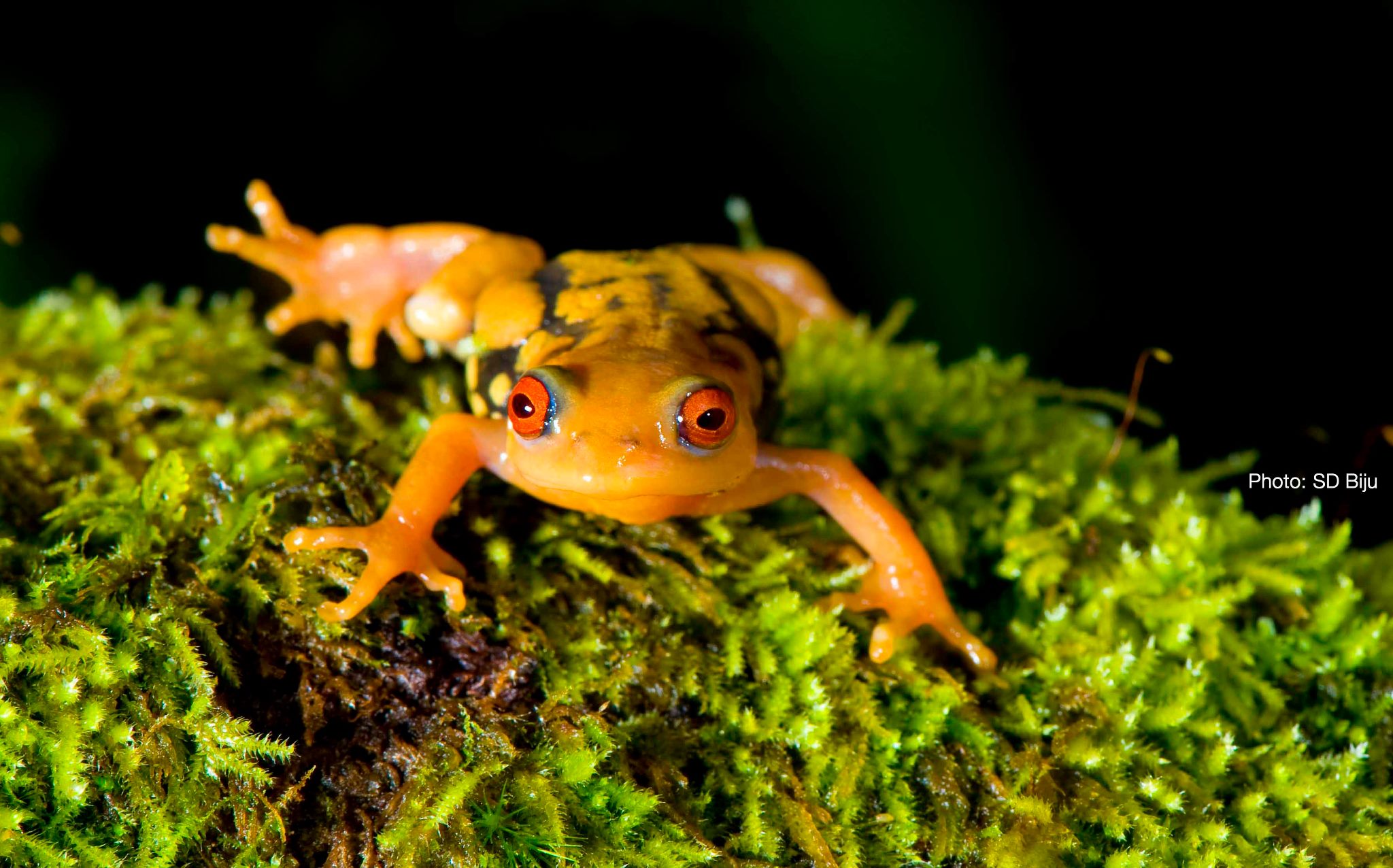
Photo Credit: Prof SD Biju
The ardent researcher
Prof SD Biju has published over 100 research articles in top scientific journals. His findings have appeared in popular international press like National Geographic, BBC, CNN, New York Times, Forbes, The Economist, Associated Press, and The Guardian.
“I am at the threshold of 60. I work for 16 hours every day. Frog study may seem absurd to some, but this is a realm of research which is highly vibrant,” the scientist remarked in an interview with Mathrubhumi.
The Global Indian has guided many PhD students and is happy with the quality of research he produced during the process. All his students are well-placed as professors or scientists in top universities and institutions in India and abroad.
With the support of Conservation International, USA, International Union for Conservation of Nature (IUCN), and Critical Ecosystem Partnership Fund (CEPF) the herpetologist runs The LOST! Amphibians of India (LAI) which is a nation-wide citizen science and conservation initiative started in 2010 for rediscovering India’s lost species of amphibians.
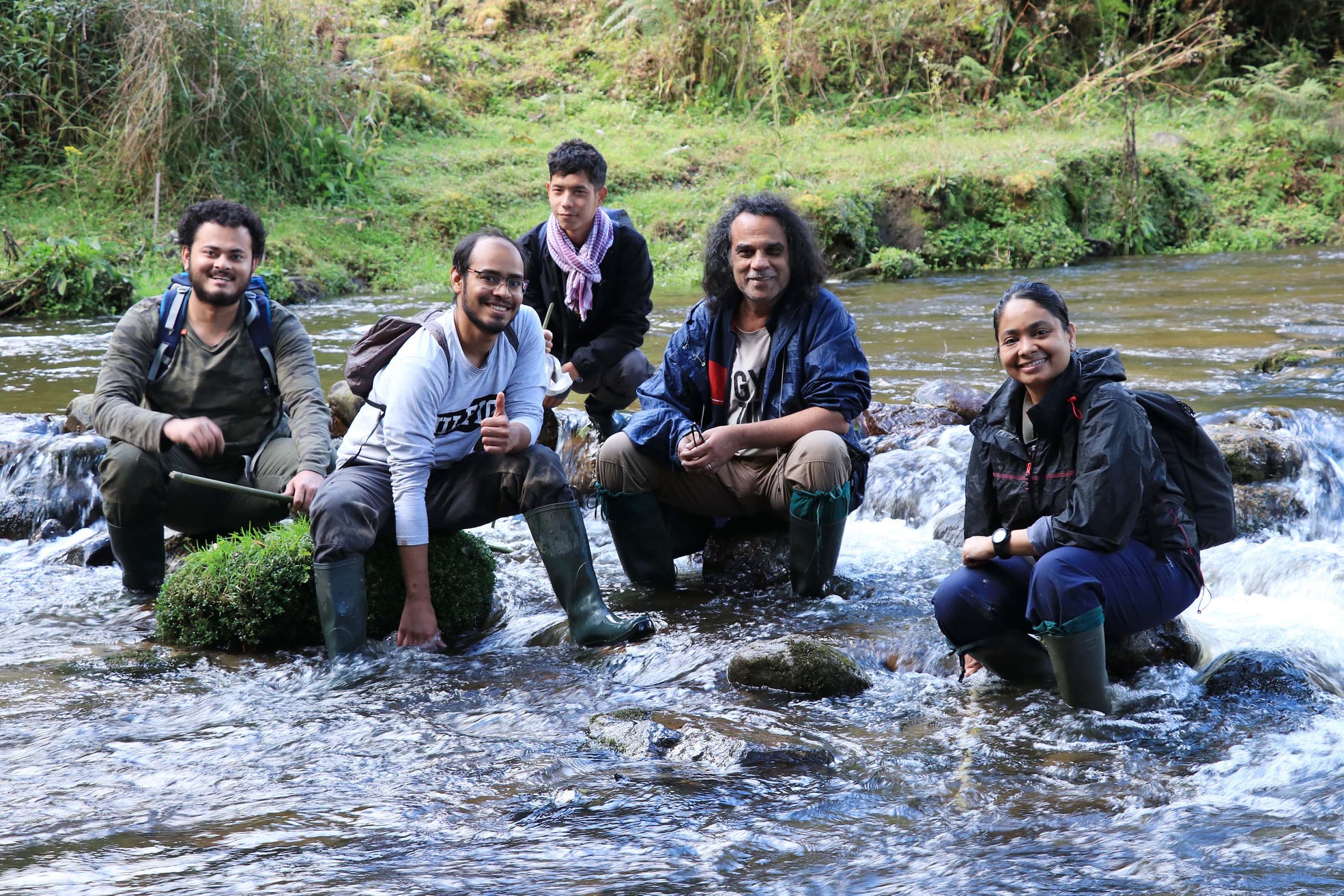
Prof Biju and his team on field study
The Frog Prince
Under his leadership, some of the lost species of frogs like the Chalazodes Bubble-Nest Frog, were rediscovered in the Westerern Ghats after 136 years.
The frog researcher who founded Systematics Lab at the University of Delhi in 2006 has been making contributions towards conservation of amphibians through discovery and documentation of their species with his students. The Kerala-born has been recently conferred the first ‘Kerala Sree’ Award by the governor of the state in the presence of the chief minister. Prof Biju is often found capturing the images of the amphibians on camera with finesse of a skilled photographer. Such is his love for frogs that he even has an impressive collection of frog replicas in different shapes and sizes adorning his home.
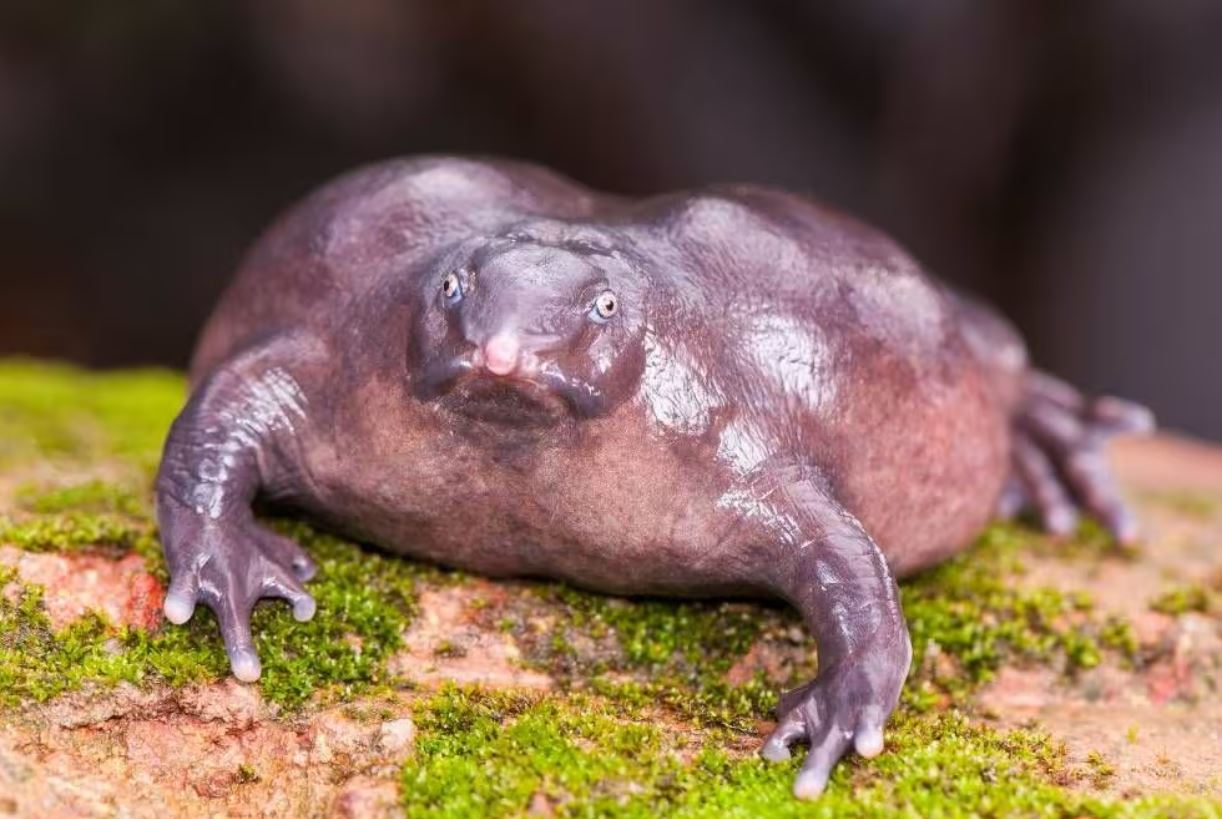
A rare species – Indian Purple Frog ((Nasikabatrachus Sahyadrensis) that is usually found 18 feet under the soil discovered by Prof SD Biju | Photo Credit: Prof SD Biju

